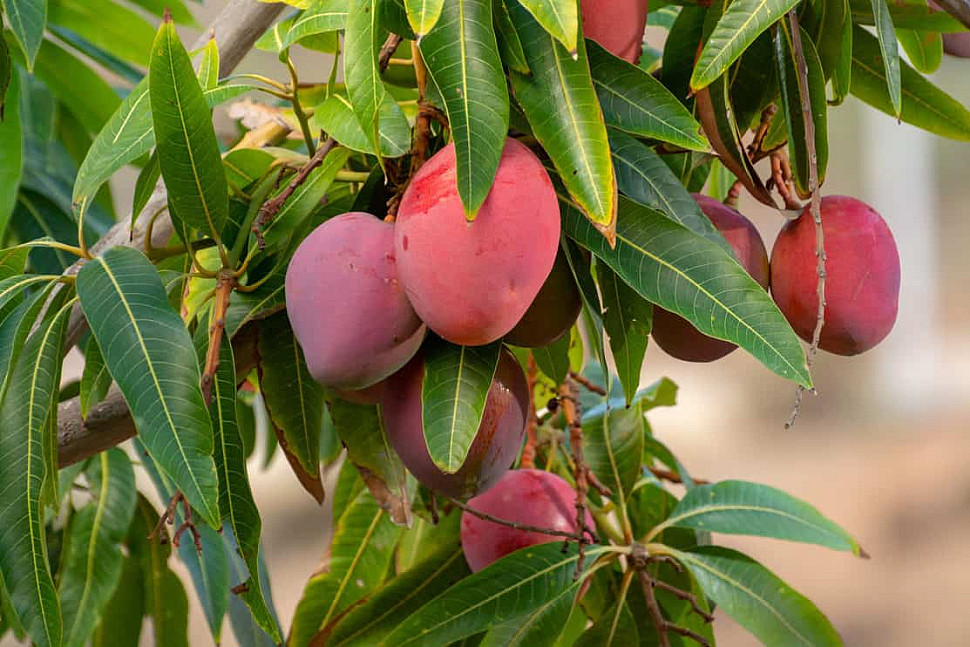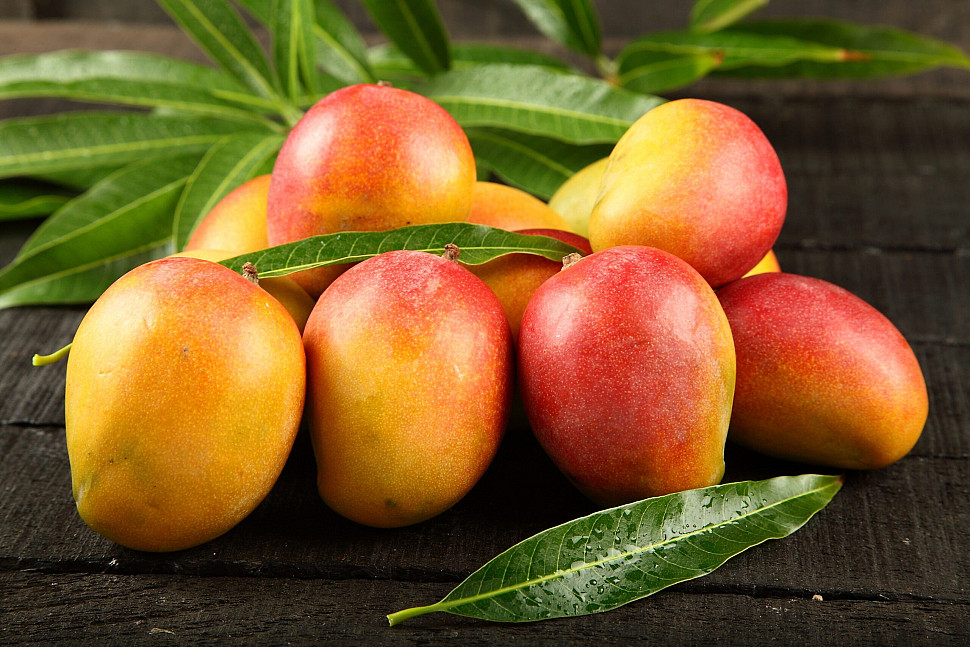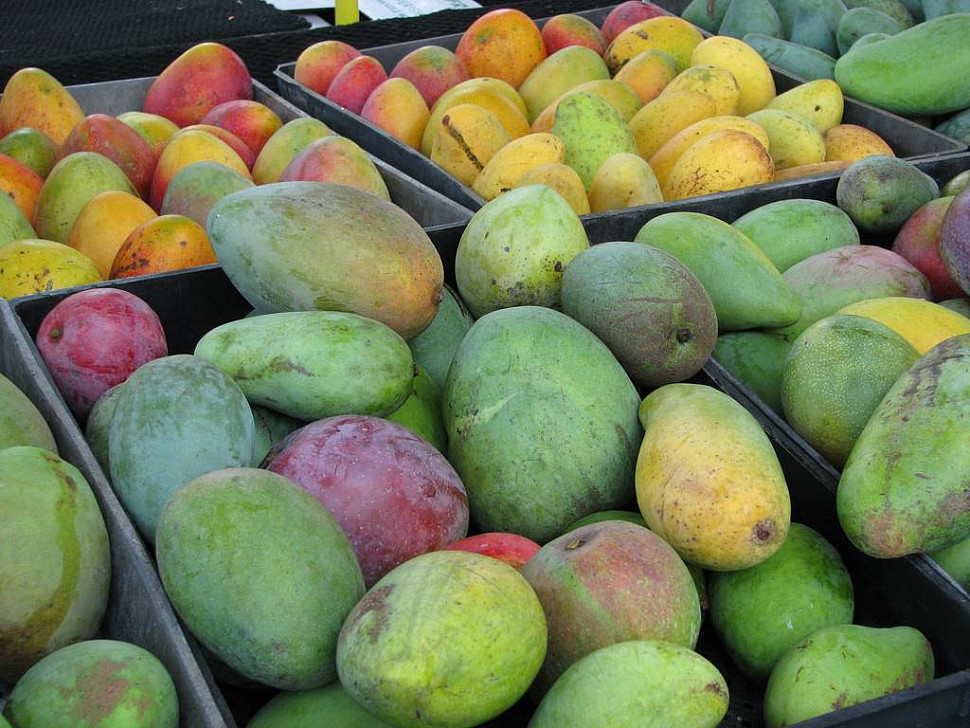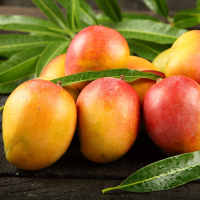
National Mango Day is a day dedicated to celebrating one of the most loved and versatile fruits in the world - the mango. This day is observed on July 22nd every year. The celebration of National Mango Day is an opportunity for mango lovers to indulge in their favorite fruit, learn more about its benefits, and try out new mango-based recipes.
Here's what you can expect on National Mango Day:
Appreciation of the Fruit: The day is all about appreciating the delicious taste and nutritional benefits of mangoes. Mangoes are not only tasty but also packed with vitamins A and C, fiber, and antioxidants.
Culinary Creations: Many people celebrate by making mango-themed dishes. This could be anything from a simple mango salad to more complex dishes like mango salsa, mango smoothies, mango desserts, and even mango-infused main courses.
Events and Festivals: In some places, events are organized where people gather to enjoy different varieties of mangoes. These events may include mango eating contests, cooking competitions, and even educational sessions about the cultivation and varieties of mangoes.
Promotions and Discounts: Some grocery stores and online marketplaces offer special promotions and discounts on mangoes and mango-based products.
Education and Awareness: National Mango Day is also a time to learn more about this incredible fruit. This could involve learning about different mango varieties, understanding their nutritional benefits, or discovering how to select and store mangoes properly.
Whether you're a long-time mango lover or new to the fruit, National Mango Day is the perfect time to enjoy a mango and appreciate the joy it brings to our taste buds.
Top Trending Mango Plants to Grow:

1. Kesar Mango: Kesar Mango is one of the finest varieties of mangoes, originally from India. Kesar mangoes are small to medium-sized fruits, approximately 4-6 inches in length. They have a unique golden saffron hue when ripe, hence the name 'Kesar', which means 'saffron' in Hindi. The skin is relatively thin and easy to peel. The flesh of the Kesar mango is fiberless, rich, and aromatic. It has a deep orange color, indicative of its high levels of carotenoids. The taste is very sweet, almost honey-like, and it has a slightly more tart and complex flavor compared to other mango varieties.
2. Haden: This variety is bright red to yellow in color, and it is known for its delicious, mildly sweet flavor.
3. Kent: These are large mangos, with a small seed, and are known for their rich, sweet flavor. The skin is mostly dark green and usually has a dark red blush over a small portion of the mango.
4. Alphonso: Also known as the "honey" or "champagne" mango, it has a smaller, kidney-shaped form with yellow skin and a slightly wrinkled appearance. It is sweet and creamy with a deep yellow, buttery flesh.
Please note that the popularity of mango varieties can vary based on factors such as region, season, and personal preference. For the most accurate and up-to-date information, I recommend checking with a local agricultural extension or a produce retailer.
Ripening a mango is a simple process that can be done at home. Here are some steps to follow:

1. At Room Temperature: The easiest way to ripen a mango is by leaving it on the kitchen counter at room temperature. Depending on how underripe it is when you start, it may take a few days to a week to fully ripen.
2. In a Paper Bag: If you want to speed up the ripening process, you can place the mango in a brown paper bag. The bag traps the ethylene gas produced by the mango, which hastens the ripening process. You can also add an apple or a banana to the bag to increase the amount of ethylene gas. Check the mango daily to avoid over-ripening. It usually takes 1-3 days to ripen using this method.
3. In Rice or Newspaper: Another method to speed up the ripening process is to bury the mango in a container of uncooked rice or wrap it in a newspaper. These methods also trap the ethylene gas close to the fruit and speed up ripening.
Remember, a ripe mango will give slightly to gentle pressure and often has a fruity aroma at the stem end. The color isn't always the best indicator of ripeness because it can vary depending on the variety.
Once the mango is ripe, it can be moved to the refrigerator to slow down the ripening process and should be eaten within a few days.
In America, you can purchase mangos from a variety of sources:

1. Supermarkets: Most large supermarkets such as Walmart, Kroger, Publix, and Safeway carry mangos, especially during the mango season which typically runs from May to September.
2. Farmers Markets: Many cities and towns have farmer's markets where you can buy fresh, locally sourced produce. While mangos are not locally grown in most parts of the U.S., some vendors may carry them.
3. Specialty Food Stores: Stores like Whole Foods Market often carry a variety of fruits including mangos. They may even have different varieties of mangos that are harder to find in regular supermarkets.
4. International Grocery Stores: In areas with large immigrant communities, you can often find international grocery stores that carry mangos. For example, Indian or Latin American grocery stores often carry mangos, especially varieties that are popular in their respective cuisines.
5. Online Grocery Delivery Services: Services like Amazon Fresh, Instacart, and FreshDirect also deliver fresh mangos right to your door.
Remember, the availability of mangos can depend on the season, and the selection may vary from store to store. It's always a good idea to call ahead to make sure they have what you're looking for.

